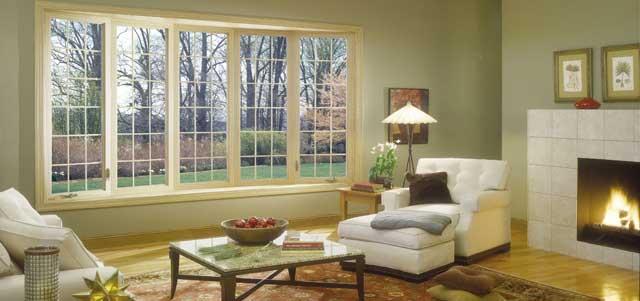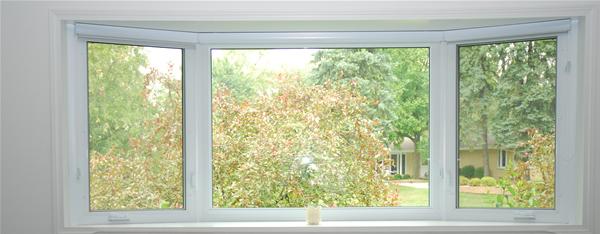Architectural Styles Of Bay Windows
The term “bay window” most commonly refers to a window that extends from the flat face of a building, which forms an outcropping from the room. The architectural styles featuring the use of bay windows throughout the ages range from medieval, baroque, and modern day buildings. The bay window may be on one story or multiple stories of a building, or may along an entire side of a building on one story.

Depending on the design of the window itself and the building, bay windows usually have either angles of 90, 135 or 150 degrees inside the bay. The bay itself may be shaped in a square or polygonal fashion, or be curved. If the window is curved without any sharp angles it can also be called a bow window. The most basic design of a bay window is triangular in shape, consisting of just two windows angled together to meet in a point. Some types of bay windows may not extend past the exterior wall of the building, but be shaped into the room as a bay.
The types of bay windows common in the United States and Canada presently are descended from British architectural styles, and their use spread to other English speaking areas and Australia also. These windows were known as oriel windows up until the baroque era. They are normally very ornamented and glamorous, and may even serve as a small balcony. Bay windows surged in popularity during the Victorian era, since they complemented the other trends of keeping houseplants and letting natural light into the room.
Bay Windows Of Today
The type of bay window that uses a 90-degree angle to protrude directly from the exterior wall is known as the box bay window. Traditionally, box types have one large window and two smaller ones on either side. There may be shelves for plants or a seating area on the interior side of the structure. They are an easier type of bay window to install in a smaller existing window, since they can be done on some scale without having to alter the exterior structure or add support.
Box bay windows can be large enough to place chairs and seating arrangements in, or they can fit over a kitchen sink. They are scalable to match your home's architectural design and your budget. You may alter the look by changing the severity of angles that the smaller side windows are placed in relation to the wall and large center window. These bay window types do require some modifications in order to be sturdy, so if you are doing this project yourself, be sure to fully understand all parts of the process before starting up.
Bow windows are similar to box windows; except for instead of window panes meeting at angles they are placed along a curved line. Four or more curved glass segments follow one line, creating a semicircle pattern. They allow in more light and views than box bay windows since they are designed to show more area and directions. The bow window style was popular in English country homes since they give the feeling of being outside while still being in the comfort of a living room.
Circle bay windows gained popularity in the Gothic era and tend to be put in bedrooms or living rooms, joining what would otherwise be a circle of windows with frames in between into one window. They can also be wrapped around the corners of buildings. Circle bay windows are not the same thing as bow windows. They are a more extreme version of the style.
Some oriel windows still are built, becoming more popular in Gothic revival architecture. They were borne of the desire to have an upper level porch, so by definition they may only be built on upper levels of a building. They need support by way of bracket or brace in addition to support that other types of bay windows require. Many people install ornate roofing over the outcropping to complete the look.


